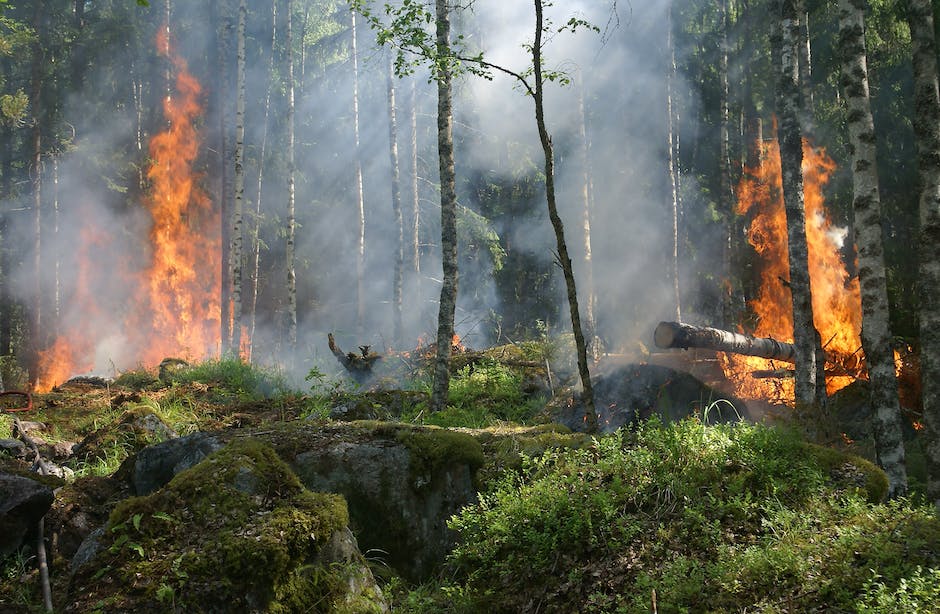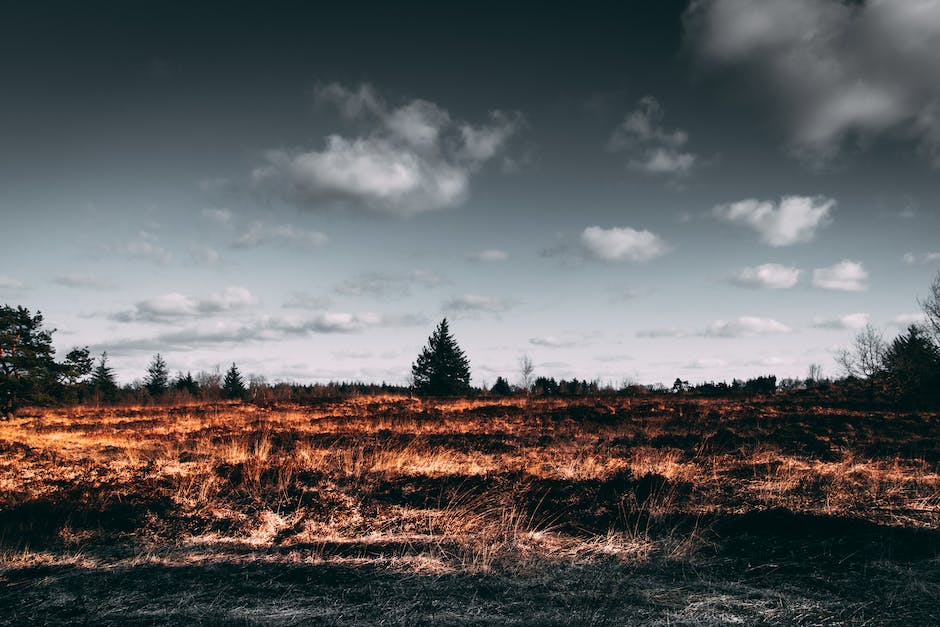Fire blight is a bacterial infection that affects various types of plants, including apple trees. The infection is characterized by black or brownish-black lesions on the flowers, leaves, fruit, and stems of the affected plant. Fire blight is caused by the bacterium Erwinia amylovora, which is found in soil, water, and on the surface of infected plant material. The bacterium can spread to healthy plants through wind, rain, insects, and soil. Once a plant is infected, the infection can spread rapidly throughout the plant. Fire blight is a serious problem for apple growers, as it can cause significant losses in yield and fruit quality.
Fire blight is agrave bacterial disease that affects apples and other members of the rose family. The disease is caused by the bacteria Erwinia amylovora, which enters the tree through open wounds. Once inside, the bacteria multiply rapidly, causing the tissue to die. If left unchecked, fire blight can kill an entire tree.
How do you treat fire blight on an apple tree?
Spray streptomycin at bloom to kill fire blight bacteria before they enter the apple tree. The nectaries of the flowers are where bacteria enter apple trees, so it is critical that streptomycin is applied while the flowers are open.
If you find that the infection has traveled into a trunk or major limb, you may be able to save the wood with careful management. Start by scraping off the bark down to the outer and inner bark. Once you have removed the bark, you will find that the tissue closest to the infection site is brown. If you are able to remove the inner bark, you may be able to save the wood.
What does fire blight look like
Fire blight is a plant disease that can affect a number of different plants, including trees and shrubs. The most common symptom of fire blight is the brown or blackening of leaves, branches, and even the trunk of the plant. In some cases, the entire plant may be killed.
The good news is that once an infected tree is removed, its fire blight bacteria are also removed. You can safely plant another apple or pear tree that’s healthy and free of disease and you can specifically choose a fire blight-resistant cultivar!
Does fire blight stay in the soil?
Pruning is the key to keeping this plant restrained. It typically doesn’t spread this time of year and entry points are usually at flowers and pruning cuts, open fresh wounds.
Fire blight is a contagious, systemic, bacterial disease that affects fruit trees, especially apples and pears. The disease is caused by the bacterium Erwinia amylovora, which enters the plant through open wounds. Once inside the plant, the bacterium multiplies and spreads through the sap, causing the plant tissue to die. Blossoms will turn brown, wilt, and die about 1-2 weeks after infection occurs. Leaves will also turn brown and curl, and fruits will blacken and rot. Fire blight can kill an entire tree if left unchecked.
Do bees spread fire blight?
Erwinia is a bacteria that can cause problems for apple trees. It is spread by honeybees and other insects, birds, rain and wind. This can make the tree susceptible to infection and disease.
Spring and summer are the best times to prune out branches that are infected with diseases. It is important to avoid pruning when the plants are wet, as this can spread the disease to other parts of the plant. Tools used for pruning should be dipped in a 70% isopropyl alcohol solution or a 10% bleach solution between each cut to prevent the spread of disease.
What do you spray on fruit trees for fire blight
This note provides information on using liquid copper to effectively control plant problems. Mix 05 to 20 oz per gallon of water and apply at silver tip and bud break — repeat at 3 to 5 day intervals up to petal fall. Use the lower rate if disease pressure is light and the higher rate when conditions favor heavy disease pressure.
Fire blight is a serious disease of fruit trees and other members of the rose family. It is caused by a bacteria that overwrites in cankers on twigs, branches, or trunks of host trees. In spring, when the weather is warm and moist, the bacteria multiply and ooze from branch or twig surfaces, causing the fruit tree leaves to blacken and the branches to die. If not treated, fire blight can kill an entire tree.
What apples are resistant to fire blight?
The Liberty apple tree is a great choice for growers because it is very resistant to scab, cedar apple rust, mildew, and fireblight. This means less work for growers and a higher quality product for consumers.
The UC model for Bacillus thuringiensis (Bt) use in organic grape production recommends the first spray at bloom, when mean temperatures reach 62°F in March, 60°F in April, and 58°F in May. This model recommends treating every 3 to 5 days until the end of rattail bloom, regardless of changes in weather that would inhibit bacterial growth and infection. Bt sprays are most effective when temperatures are between 50-86°F, and humidity is high. Grape growers using this model should monitor weekly mean temperatures and treat accordingly.
Can you reuse soil after blight
You can compost rose prunings, but it’s important to remove as many of the old roots as possible to avoid reintroducing disease. Inspect the prunings carefully for c-shaped grubs of vine weevil, which can wreak havoc on a garden. When you’re ready to plant in the compost, add controlled-release fertiliser to replace the depleted nutrients.
If you have had a crop of tomatoes affected by blight in your greenhouse, it is best not to use the soil or compost from that crop to grow tomatoes the following year. This is because the pathogen that causes blight can produce long-lived resting spores, which could potentially infect your new crop.
What can I put in my soil to get rid of blight?
Adding mulch to the soil around your plants is a good way to help prevent problems with blight. The mulch will help to keep the area around the plants more moist, which can make it harder for the spores of the blight to survive.
Early blight and septoria leaf spot spores can overwinter in the ground, causing the disease to return next year. Late blight does not overwinter in the soil because it requires live tissue to survive, but wind can carry spores up to 30 miles away from infected plants.
Does blight spread fast
If you think you may have a case of blight on your hands, it is important to take action immediately. Blight spreads quickly and can easily devastate an entire crop. Once blight has taken hold, it is very difficult to eradicate. The best course of action is to prevent the disease from spreading in the first place. Here are some tips:
1. Remove any infected plants from your garden immediately.
2. Dispose of infected plants in a way that will prevent the spread of the disease, such as by burning or burying them.
3. Thoroughly clean and disinfect any tools or equipment that came into contact with the infected plants.
4. Avoid working in your garden when the air is damp, as this is when the spores are most likely to spread.
5. Practice good crop rotation to avoid exhausting the soil and making your plants more susceptible to disease.
Neem oil is an effective way to kill fire blight, a bacterial disease that causes the leaves of plants to wilt and appear as though they have been burned. To prevent fire blight, you must spray trees while dormant. The bacterium that causes fire blight cankers overwinter on branches, twigs and trunks of trees.
How do you detect fire blight
Fire blight is a bacterial disease that affects plants in the genus Rosaceae, which includes apples, pears, quince, and crabapples. The disease is most commonly seen in apple and pear trees, but can also affect other plants in the Rosaceae family. The bacterium Erwinia amylovora is the agent of fire blight. Fire blight symptoms may appear on the blossoms, shoots, branches, trunk and rootstock. Blighted blossoms appear wilted, shriveled and brown. Young fruitlets are also very susceptible and appear water soaked and slightly off-colour soon after infection. Fruitlets quickly turn brown to black and eventually shrivel up.
Copper can help control the spread of fire blight if applied during bloom, every four to five days until blooming is over. This can cause russeting or scarring of fruits, but can be effective in preventing the disease from spreading during the most active season of its lifecycle.
Conclusion
Fire blight is a potentially destructive bacterial disease that can affect a number of different plant species, but is particularly harmful to fruit trees in the Rosaceae family, such as apple, pear, and quince trees. The disease gets its name from the characteristic blackened, burned-looking appearance of the affected leaves and branches. Fire blight can kill an entire tree if left unchecked, so prompt treatment is essential for preventing serious damage.
Fire blight is a bacterial disease that affects apple trees. The disease is spread by wind and rain, and it can often kill the tree.
I’ve always been drawn to trees.
As a kid, I spent most of my free time outside, climbing, exploring, and trying to figure out the names of the trees around me.
That early curiosity eventually led me to study arboriculture and horticulture at Michigan State.
Later, I completed a degree in forestry at the University of Michigan.
I’ve been working in tree care and education ever since.
These days, I enjoy helping people learn more about the trees in their own backyards.
How they grow, how to care for them, and why they matter.
You don’t need to be an expert to appreciate trees.
A little curiosity goes a long way.
